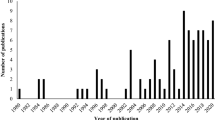Abstract
Green Security is a new research field defining and investigating security solutions using an energy-aware perspective. Growing efforts and interests for an intelligent or smart surveillance system which is capable of automatically detecting and tracking target objects is in the spotlight in the security community. So far, these technologies are mainly aimed at single camera applications and are evolving with the demand for wide-area surveillance systems currently. However, the tracking techniques used on a single camera have limitations in providing effective crime prevention and countermeasures when an incident occurs since an object is not linked to other cameras. In addition, the use of multi-camera systems for wide-area surveillance not only produces large amounts of video data to be stored, but also have more technical requirements in the interrelation between cameras or server. It require a considerable amount of time, manpower and energy in multi-camera tracking and back-tracking of objects. Therefore, we propose the advanced smart surveillance system for wide-areas which is capable of the automated tracking and retrieval of target object and digital evidence-video collection. Furthermore, we considered the multiple-camera environment with non-overlapping views which includes more constraint conditions by various light changes. This system enables real-time object tracking, fast post-retrieval and selective digital evidence collection with economy of time, manpower, memory devices, and energy consumption. Also, this system is more energy-efficient since our schemes are organically connected to each other.












Similar content being viewed by others
References
Fan CI, Lin YH (Jun. 2012) Full privacy minutiae-based fingerprint verification for low-computation devices. J Converg 3(2):21–24
Chang SM, Chang HH, Yen SH, Shih TK (Sep. 2013) Panoramic human structure maintenance based on invariant features of video frames. Human-centric Comput Inf Sci (HCIS) 3(1):1–18
Jeong WH, Kim SJ, Park DS, Kwak J (2013) Performance improvement of a movie recommendation system based on personal propensity and secure collaborative filtering. J Inf Process Syst 9(1):157–172
Cai Q, Aggarwal JK (Nov. 1999) Tracking human motion in structured environments using a distributed camera system. IEEE Trans Pattern Anal Mach Intell 21(11):1241–1247
Khan S, Shah M (Oct. 2003) Consistent labeling of tracked objects in multiple cameras with overlapping fields of view. IEEE Trans Pattern Anal Mach Intell 25(10):1355–1360
Kim D, Jung S, Suryanto Lee S, Kim H, Ko S (2012) Object modeling with color arrangement for region-based tracking. ETRI J 34(3):399–409
Javed O, Rasheed Z, Alatas O, Shah M (2003) KNIGHTM: a real-time surveillance system for multiple overlapping and non-overlapping cameras. In: Proceedings of the 4th international conference on multimedia and expo, pp 649–652
Javed O, Shafique K, Rasheed Z, Shah M (2008) Modeling inter-camera space-time and appearance relationships for tracking across non-overlapping views. Comput Vis Image Understand 109(2)
Gilbert A, Bowden R (2008) Incremental, scalable tracking of objects inter camera. Computer vision and image understanding. Special issue on intelligent visual surveillance (IEEE), pp 43–58
Montcalm T, Montcalm T (2010) Object inter-camera tracking with non-overlapping views: a new dynamic approach. Canadian conference on computer and robot vision, pp 354–361
Han M, Park S, Han J (2011) Object tracking framework of video surveillance system based on non-overlapping multi-camera. KIPS Trans 21(6):141–152
Patel BV, Meshram BB (2012) Content based video retrieval systems. Int J UbiComp 3(2):13–30
Perrott AJ, Lindsay AT, Parkes AP (2002) Real-time multimedia tagging and content-based retrieval for CCTV surveillance systems. In: Proceeding on SPIE, vol 4862
Brown LM (2008) Color retrieval for video surveillance. IEEE international conference on AVSS’08, pp 283–290
Annesley J, Orwell J, Renno JP (2005) Evaluation of MPEG7 color descriptors for visual surveillance retrieval. In: Proceedings of the international conference on computer communications and networks, pp 105–112
Calderara S, Cucchiara R, Prati A (2006) Multimedia surveillance: content-based retrieval with multicamera people tracking. In: Proceedings of the ACM international workshop on VSSN ’06, pp 95–100
Yuk JS-C, Wong K-Y, Chung RH-Y, Chow KP, Chin FY-L, Tsang KS-HT (2007) Object-based surveillance video retrieval system with real-time indexing methodology. International conference on image analysis and recognition (ICIAR), pp 626–637
Tian Y, Hampapur A, Brow L, Feris R, Lu M, Senior A (2009) Event detection, query, and retrieval for video surveillance. Artificial intelligence for maximizing content based image retrieval
Lim K-S, Yoo BY, Han J, Bang J, Lee S (2009) A portable forensic toolkit for rapid crime response. In: Proceeding of Korea digital forensic workshop
Rogers MK, Goldman J, Mislan R, Wedge T, Debrot S (2006) Computer forensics field triage process model. Conference on digital forensics, security and law
Turner P (2007) Applying a forensic approach to incident response, network investigation and system administration using Digital Evidence Bags. Digi Invest 4(1):30–35
Lim K-S, Lee DG, Han JW (2011) A new proposal for a digital evidence container security convergence. IEEE international conference on control system, computing and engineering
Cristani M, Farenzena M, Bloisi D, Murino V (2010) Background subtraction for automated multisensor surveillance: a comprehensive review. EURASIP J Adv Signal Process, Article No. 43
Chung RHY, Chin FYL, Wong KYK, Chow KP, Luo T, Fung HSK (2005) Efficient block-based motion segmentation method using motion vector consistency. In: Proceedings of IAPR conference on machine vision applications, pp 550-553
Hsia KH, Lien SF, Su JP (2013) Moving target tracking based on CamShift approach and Kalman filter. Int J Appl Math Inf Sci 7(1):193–200
Acknowledgments
This work was supported by the IT R&D program (10043959, Development of EAL 4 level military fusion security solution for protecting against unauthorized accesses and ensuring a trusted execution environment in mobile devices) of KEIT/MSIP (Ministry of Science, ICT and Future Planning), Korea.
Author information
Authors and Affiliations
Corresponding author
Rights and permissions
About this article
Cite this article
Park, SW., Lee, D.G., Han, J.W. et al. Automated and coupled services of advanced smart surveillance systems toward green IT: tracking, retrieval and digital evidence. J Supercomput 69, 1215–1234 (2014). https://doi.org/10.1007/s11227-014-1164-3
Published:
Issue Date:
DOI: https://doi.org/10.1007/s11227-014-1164-3




